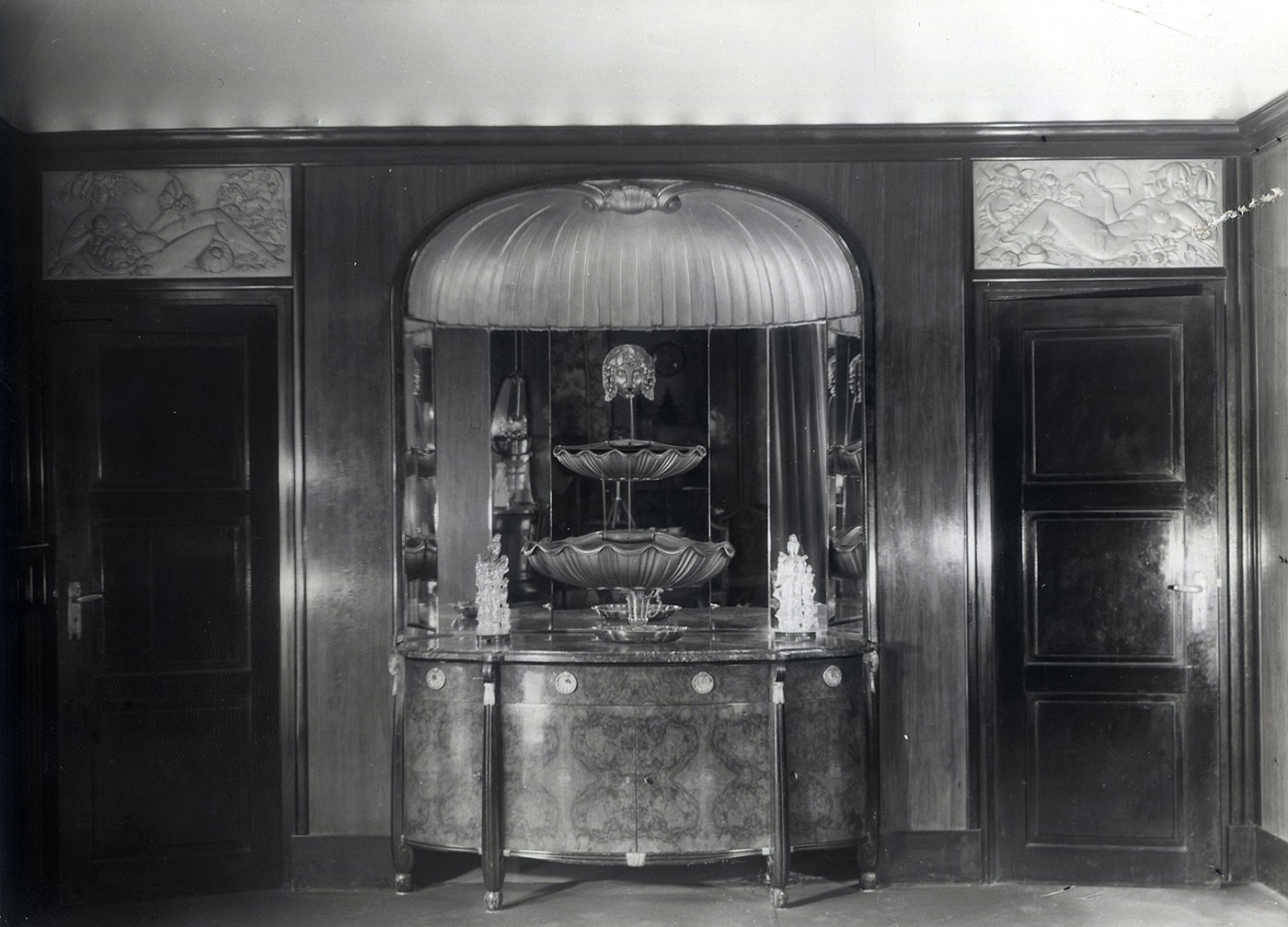History
The dining room suite and other furniture were donated by Madame Philippe Cruse in 1975, in memory of their parents, Monsieur and Madame Pierre Girod. The ensemble was formerly in their apartment at 4 avenue Hoche in Paris’s 8th arrondissement. The entrance to the building, built by the architects Ricard and Le Foll in 1892, is framed by two Atlases wearing lion’s skins, a reference to Hercules and the Nemean Lion.
-
Study for Monsieur Pierre Girod’s dining room
SUE and MARE
Paris, circa 1920-1921
pencil on paper
gift of MADAME ANNE-FRANCOISE MARE-VÈNE and MONSIEUR MICHEL MARE, 1984inv. 55816
Commissioned by Monsieur and Madame Girod in 1920, this was one of the first interiors executed by the Compagnie des Arts français, founded in 1919, whose shop at 116 rue du Faubourg-Saint-Honoré, also in 8th arrondissement, opened early in 1920.
A Compagnie des Arts Français invoice, dated 8 November 1921 and addressed to Madame Pierre Girod, tells us that the initial estimate, proposed on 26 June 1920, was supplemented on 28 December 1920 with additional wood furnishings, furniture and a gilt staff ceiling and cornice.

The dining room has rosewood and blackened mahogany panelling, a ceiling gilt with gold leaf, gilt stucco bas-reliefs by Paul Vera (Summer and Autumn), a gilt bronze fountain and a mirrored alcove. The contrasting blacks and golds create an impression of comfort and elegance, combined with a concern for geometric construction and simplicity in the discreet, stylised ornamentation. This room is an example of the Compagnie des Arts Français’s aim to create “serious, logical, welcoming” interiors respecting tradition, notably that of the Louis-Philippe period, characterised by austere, rectilinear forms and dark colours.
-
The dining room in its original stateMusée des Arts Décoratifs, photograph donated by the GIROD-CRUSE family
-
The dining room in its original state
photographs donated by the GIROD-CRUSE family
Musée des Arts Décoratifs, photograph donated by the GIROD-CRUSE family
-
The dining room in its original stateMusée des Arts Décoratifs, photograph donated by the GIROD-CRUSE family
-
The dining room in its original stateMusée des Arts Décoratifs, photograph donated by the GIROD-CRUSE family

In 1921 the Compagnie’s founders, André Mare and Louis Süe, published a manifesto entitled Architectures, illustrated by Marie Laurencin, Jean-Louis Boussingault, André Dunoyer de Segonzac, Roger de La Fresnaye and Bernard Boutet de Monvel, for which Paul Valéry wrote Eupalinos or, the Architect. The Girod dining room is described in it and illustrated with two plates line-engraved by Jacques Vilon.